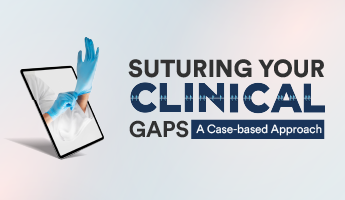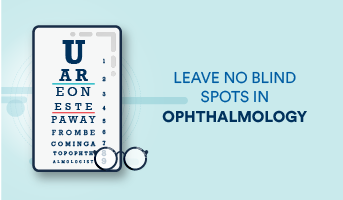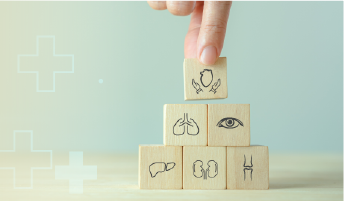

All you need to know about Post-graduation in Pediatrics
Pediatrics is the field of medicine dedicated to treating infants, children, and teenagers. In addition to being a distinct specialty, pediatrics is a collaborative one that incorporates other specialties. By 2030, pediatrics aims to lower infant mortality rates, stop the spread of infectious diseases, and help adolescents with their mental health, and physical capabilities. PG Pediatrics in Post-graduation specifically aims to prepare candidates to handle a variety of pediatric diseases and provide comprehensive care to children with long-term follow-up of chronic cases. It aims to educate students in medicine and paramedicine to ensure holistic understanding that includes both theoretical and practical knowledge.
The duration of Post-graduation in Pediatrics is 3 years, which may be increased or decreased as per the policies of various institutions. To ensure the students’ complete development of both academic and practical abilities, PG in Pediatrics provides sufficient expertise in offering dietary advice to new parents regarding breastfeeding and a healthy diet for children and adolescents. Additionally, it offers training in pediatrics and neonatology to make qualified experts capable of offering fundamental and specialised treatment to newborns, infants, children, and teenagers.
PG Pediatrics focuses on:
- The crucial relevance of children’s health in the context of the nation’s top health priority.
- The degree programme offers solid foundations for the additional research study.
- The significance of growth and development in the field of pediatrics and working with each child to attain his or her full potential in this regard.
- Carrying out pertinent investigative and therapeutic procedures on the patients.
- Nutritional guidance on nursing, weaning, and a balanced diet for newborns, infants, kids, and teenagers.
- Conducting pertinent research for diagnostic and prognostic evaluation while taking into account the costs, advantages, and risks involved.
- Analysing information gleaned through anthropometric measurements and developmental evaluations, as well as assessing nutritional status and deciding whether the child is receiving enough food.
- Offering sound advice on healthy and hygienic activities in order to prevent illnesses, disorders, injuries, accidents, and poisoning.
DigiNerve’s Pediatrics MD by Prof. Piyush Gupta
Pediatrics MD is a remarkable course designed by the Chief Editor- Prof. Piyush Gupta, renowned for his best-selling “PG Textbook of Pediatrics”. India’s top 100 faculty have enriched this online pediatrics course with over 500 years of combined experience and knowledge, making it unique in its field.
All the topics have been carefully chosen to address postgraduate students’ pain areas, for which they struggle to find adequate information. In order to meet all of the learning needs of the students while they pursue their master’s in pediatrics, the course promotes concept-based and approach-based learning. Benchmark/evidence-based studies have been used to support the principles. The cases have been thoroughly explored, with a focus on the clinical findings and a thorough workup on how to get the correct diagnosis. To refresh students’ memories, discussions about investigations such as ECGs, echocardiography, and other reports have also been had. The lectures include a live demonstration of systemic examination as well.
One of the PG exam’s most commonly asked topics is Neurology. As a result, this specialty has taken up around 20% of the course, and the professors have used an organised method to make the concepts easier for the students. The most recent society guidelines have been incorporated into each topic, making this Pediatrics MD Course one of the best online pediatrics postgraduate courses. Due to the significance of research in the PG curriculum, a complete module has been devoted to providing students with step-by-step instructions on how to do research. For the students’ convenience, while conducting their ward rounds, an interactive drug formulary has been included in the course. This covers all the important medications and includes pertinent dosages, contraindications, and common brand names. The course includes engagement activities including monthly Chat Shows, Journal Club, and recent updates.
Table of Content – Pediatrics MD by Prof. Piyush Gupta
Introduction
Indicators of Child Health and Vital Statistics
Resources for Learning in Pediatrics
Nutrition
Assessment of Nutritional Status
Nutritional Status of Children and National Programs in India
Micronutrient Supplementation: Key Issues
Infant and Young Child Feeding
JUNCS Guidelines & Way Forward
Severe Acute Malnutrition
Infectious Diseases
Immunization Dialogue
Prevention of Hospital-Acquired Infections
Principles of Antibiotic Therapy
Antimicrobial Resistance
Resistant Bacterial Infections
Tuberculosis
COVID -19
Anti-Viral Therapy
Helminthiasis: Current Perspectives
Neonatology
Assessment of Gestational Age
Neonatal Reflexes
Neonatal Resuscitation
X-ray and ECG in Neonates
Neonatal Jaundice
Comprehensive New-Born Screening for Birth Defects
HIE, IVH and White Matter Injury
Follow-up of High-risk Newborn
Critical Care
Shock
Fluid and Electrolytes
ABC of ABG
Cardiopulmonary Resucitation
Oxygen Therapy and Ventilation
Genetics and Metabolic Disorders
Approach to Diagnosis of Inborn Errors of Metabolism
Approach to Diagnosis of Genetic Disorders
Chromosomal Disorders
Newborn Screening in India
Approach to Skeletal Dysplasia
Gastroenterology
Examination of abdomen
Approach to a Child with Hepatosplenomegaly
Approach to a Child with Jaundice
Interpretation of Liver Function Tests with Case Scenarios
Persistent Diarrhea
Approach to Chronic Liver Disease
Portal Hypertension and Ascites
Upper GI Bleed: Diagnosis & Management
Approach to A Child with Constipation
Approach to a Child with Malabsorption
Endocrinology
Growth and Growth Charts
Approach to Short Stature
Congenital Hypothyroidism
Diabetes Type 1
Approach to Pubertal Disorders
Disorders of Sex Development: A Practical Approach
Hematology
Approach to a Child with Anemia
Hemolytic Anemia: Thalassemia
Nutritional Anemia
Bleeding Disorders in Pediatric Practice
Approach to Coagulation Disorders
Cardiology
Examination of Cardiovascular System in Children
Basic ECG and Arrhythmias in Children
Approach to a Child with Congenital Heart Disease
Left-to-Right Shunts
Approach to Cyanotic Heart Diseases
Cyanotic Heart Disease (Fallot Physiology)
Rheumatic Fever and Rheumatic Heart Disease
Cardiomyopathies and Congestive Heart Failure
Pediatric Pulmonary Hypertension
Nephrology
Urinary Tract Infections
Proteinuria & Nephrotic Syndrome in Children
Approach to Hematuria and Acute Nephritic Syndrome
Renal Tubular Disorders
Acute Kidney Injury
Chronic Kidney Disease
Hypertension in Children
Respiratory System
Examination of Respiratory System
Bronchial Asthma
Pneumonia: Differential Diagnosis and Management
Pleural Effusion: A Case-based Discussion
Neurology
Clinical Neuroanatomy
Higher Mental Function Assessment
Cranial Nerve Examination
Demonstration of Motor System in Children
Examination of Sensory System, Cerebellar and Meningeal Signs
Case-based Understanding of Localization in Neurology
How to summarize and Present a Neurological Case
Bare Basics of Interpreting Neuroimaging
Understanding the Basics of EEG
Principles of Developmental Evaluation
Developmental Assessment First 6 Months of Life
Developmental Examination (6 months–2 years)
Developmental Examination (2-5 years)
Case Scenarios in Developmental Deviations
How to Present a Case of Cerebral Palsy
Case Presentation of TBM
Case Presentation of DMD
Case Based Discussion of Seizure and Epilepsy in Children
Common Case Scenarios Presenting with Epilepsy in Children
Movement Disorders: Phenotypic/Clinical Spectrum
Case Based Approach to Hydrocephalus and Neural Tube Defects
Pediatric Stroke: Challenges in Diagnoses and Management
Approach to Floppy Infant
Rheumatic Disorders
Approach to a Child with Rheumatic Disorder & pGALS Exam
Rational Diagnostics for Rheumatic Disorders
Juvenile Idiopathic Arthritis and Mimics
Childhood-onset Systemic Lupus Erythematosus (cSLE)
Approach to Pediatric Vasculitis
Macrophage Activation Syndrome
Principles of Management of Pediatric Rheumatological Disorders
Approach to Primary Immunodeficiency Diseases
Research in Pediatrics
Study Designs
Steps of Conducting Research the ABC (RQ, Aim, Objectives)
Principles of Statistical Analysis
Sample Size Estimation
Drug Formulary
Best Way to enhance knowledge during PG in Pediatrics
Learning in PG programmes should primarily come from clinical and academic work and be self-directed. The formal sessions are merely meant to supplement this core effort. Following are some of the ways you can study effectively during post-graduation:
- Attend seminars or interdepartmental cases, participate in reputable scientific gatherings (CME, symposia, and conferences), and attend webinars by eminent faculty like Prof. Piyush Gupta.
- Focus on practice-related resuscitation, basic sciences, biostatistics, research methodology, teaching technique, hospital waste management, health economics, and medical ethics.
- Postgraduate students must take part in the training and instruction of interns and undergraduate students which will also brush up their knowledge of undergraduate studies.
- Postgraduate students should keep a log book during the training time that details the length of their posts and work in pediatric wards, outpatient departments, and casualties. This should list the operations and classes they attended. This will assist them in keeping track of the training-related activities and can be used to evaluate the experience gained periodically.
- Students must visit all of the department’s clinical units during their rotation including neonatology, perinatology, intensive care, and emergencies.
- Students should go through evidence-based video lectures and benchmark clinical trials. These can be accessed easily with DigiNerve’s Pediatrics MD course by Prof. Piyush Gupta, author of the renowned ‘PG Textbook of Pediatrics’.
Career Options after Pediatrics MD:
Pediatricians are required to operate in a variety of settings including long-term community care for children and adolescents, and general pediatric facilities to treat a variety of diseases and health concerns related to children. After postgraduation in pediatrics, one can opt for the following career paths:
- Neonatologists: Medical professionals with specialised training in managing complex, high-risk health problems in babies and young children.
- Cardiologists: They specialise in treating children’s heart issues, such as congenital heart disease and irregular heart rhythms.
- Critical Care Pediatricians or Pediatric Intensivists: They specialise in critical care and have extensive training in diagnosing and treating children with life-threatening diseases.
- Pediatric Endocrinologists: They diagnose and treat hormonal abnormalities in children including developmental issues, early or delayed puberty, thyroid disorders, and others.
- Gastroenterology Pediatricians: They identify and manage major issues including gastrointestinal haemorrhage, inflammatory bowel disease, lactose intolerance, liver disease, vomiting, pancreatic insufficiency, and others.
- Pediatric Hematologists and Oncologists: They treat children suffering from leukemia, lymphomas, brain tumours, bone tumours, and solid tumours.
- Neonatal Pediatricians: Although all pediatricians are trained to care for newborns who have just been born, neonatal pediatricians are particularly skilled in caring for infants who are born prematurely or with serious injuries, illnesses, or birth defects. Additionally, they can identify issues with the infant while still in the womb so that they can consult an obstetrician for treatment.
- Child Nephrologists: They treat kids with bladder, urinary tract, and kidney issues. Additionally, congenital and acquired renal issues are identified in them.
- Pediatric Allergists: They diagnose allergic reactions caused by food, air, or water that could cause asthma, a rash, or life-threatening anaphylaxis.
- Pediatric Anesthesiologists: Special medical skills are required for procedures like surgery. They are qualified to assure the safety of a child undergoing surgery if they are dealing with a condition that calls for it.
- Pediatric Developmentalists: They are equipped with skills to evaluate, counsel, and provide treatment for children during their early age and adolescence; if they have physical defects like muscular dystrophy, or if they have Attention Deficit Hypersensitivity Disorder (ADHD) and other behavioural and developmental issues.
- Pediatric Dermatologists: They are the pediatricians who are experts in the diagnosis, management, and treatment of skin diseases in children.
- Pediatric Urologists: They attend to children with urinary tract infections, disorders of urination like urinary retention, urinary incontinence, and others.
FAQs
Q1. Is MD Pediatrics a good career?
Ans. Graduates in MD Pediatrics can find employment in both the public and private sectors in India, according to their interests, abilities, and preferred field of work.
Q2. How long is MD in Pediatrics?
Ans. MD in Pediatrics is a 3-year long postgraduate program in the medical field.
Q3. Which is the best book for Paediatrics MD?
Ans. PG Textbook of Pediatrics by Prof. Piyush Gupta is the most renowned Pediatrics textbook in post-graduation.
Related post
Related Courses







































